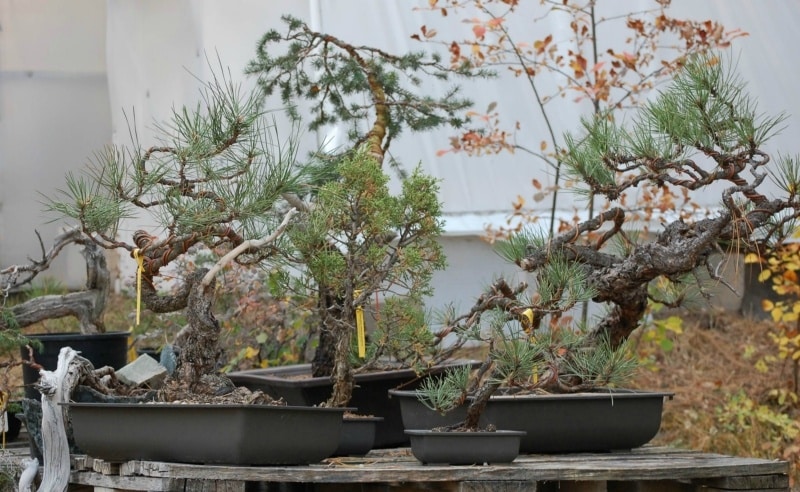by Dale Krueger
During our maiden collecting trip to the Black Hills area in South Dakota we made a point of contacting Andy Smith to see if we could meet up while we were there. When you see a collected tree for sale, one of the first names you think of is Andy Smith. Andy has a dream job; he scouts the Black Hills area locating timber for companies to log. What a great way to search for yamadori bonsai; while he’s working his day job he’s finding good areas to collect trees.
Andy has been interested in bonsai since about 1992, when he was core sampling trees for a climate research grant and found some small trees that were well over 500 years old. About the same time, his wife gave him a $15.00 “K-Mart” bonsai juniper and that was it. After doing some reading and meeting some MBS members including Bob and Pam Hampel, Kirk Hedberg and Greg Fiebing; he learned enough to begin bringing ‘em back alive.
Andy collects many varieties of trees, but his greatest successes are with Ponderosa pines and Rocky Mountain junipers. They are mostly from the Rapid City region, but he likes to collect in Wyoming as well because each tree has a specific area in which it thrives. April and May are his favorite times to collect. He often has to wait until snow is out of areas before he can get in, but he feels that this is the time for best survival. The first key is to find a tree that you can get as much of the root pad as you can, as undisturbed as possible. After 1000’s of trees you learn which trees will choose to be relocated and which ones will say; I’ll stay right here, thank you very much.
When he is collecting, he likes to use burlap and mulch to wrap the roots in. Sometimes he will leave the trees in this package in the green house over the winter until he sees signs of growth. Then he brings them into the hoop house to keep the humidity level and temperature up and consistent during this delicate period. Over the years of collecting he has learned a lot from both successes and failures. He has experimented with different soil mixtures as well as supplements and fertilizers. His combination of more than half chicken grit, some Oil Dri, pea gravel, Turface and about 10% bark give him the best results.
He likes to use a transplant fertilizer and as the temperature reaches the 55 degree point (55-70 degrees is the best temperature for root growth) he starts to give the trees a mild Miracle Grow type of fertilizer. He feels it is important that you should not work with the trees, especially the roots until this temperature. Andy has found that after he collects in the spring, he starts to see root growth after about 6 weeks, near the end of July usually. Not all trees like to be moved, Common junipers, with their dramatic, twisty, contorted limbs and dead wood are especially finicky.
We really enjoyed the time we spent visiting with Andy, learning his tips of the trade and wandering through his collection of trees. If you’re ever in the Black Hills Area be sure to look him up. Andy can be found just north of Pactola Lake. To visit Andy’s website click here Enjoy the images from our visit.





















